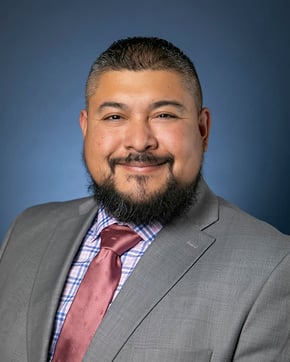Shining a light on the importance of financial literacy in schools is top of mind in California. And our SAFE Credit Union Financial Education Team is working hard to ensure the topic gleams ever brighter.
We are now offering our first 100 percent SAFE-developed budget simulation program, Budget Cents. The program, or what I like to call our “gamified” budget challenge, is designed to bring financial literacy directly to high school students in the Greater Sacramento area.
It couldn’t be at a better time. Our Budget Cents program launches as state legislators consider Assembly Bill 984. If passed, the bill will require high school students to take personal finance courses in order to graduate. California does not require financial literacy as part of its statewide curriculum.
Our certified financial educators are committed to doing our part to provide students with vital budgeting skills. Budget Cents achieves this goal by immersing students into a day-in-the-life budgeting scenario. Students are given a job, income, housing, a credit score, all the while enticed by discretionary purchases. We even have a “going to the mall” simulation.
We keep it real.
Embedded costs in the program reflect prices found in our communities. When we developed it, we looked at data for the Greater Sacramento area. So, when students are running through it, they see actual housing costs, actual transportation costs, and the actual costs of purchasing food and dining out.
Students are often surprised with how much these things, well, “actually cost.”
We also keep them on their toes by introducing unexpected expenses. We want them to experience, like their parents, paying for unplanned expenditure. For example, participants may think their budgets are squared away, but then without warning they get a “flat tire,” or a “broken window,” and they have to come up with the money to pay for repairs.
As important as legislation and the work that we do at SAFE is, parents can also introduce budgeting skills at home. Here are some tips:
Begin with a Conversation
Don’t shy away from being transparent about what you are spending your money on and why. While these discussions can sometimes be uncomfortable, they are invaluable in preparing students to be fiscally sound adults.
Learning Opportunities
Whenever possible turn purchases into a learning opportunity. As an example, when I’m at the store I chat with my kids and tell them. ‘Look at how much this cost versus this. Look at what this does in relation to this.’ It can be challenging, but there is no better example of how far their money will and can go.
“No” means “No,” Because…
A big part of being a parent is telling our kids “no,” and often when they want you to buy something for them. When you do have to say “no,” be sure to elaborate on why you are saying it. For example, you can explain to them that money is a limited resource, and that it should be used wisely to maintain a healthy budget. Our wants versus our needs, is a key foundational element that unfortunately many adults don’t learn until they have accumulated too much debt.
Read more detailed tips on how to “Make Financial Literacy a Way of Life” here.
Our Budget Cents program kicked off in April and is open not only to the families of SAFE members, but to all students throughout the communities we serve. SAFE’s Budget Cents and additional educational workshops and webinars are free to the public.
Learn More
To schedule a SAFE Credit Union Budget Cents event or another Financial Education workshop, please email financialwellness@safecu.org.
Our Mission
SAFE established its Financial Education Team, to further the credit union cooperative principle to share profits in part by offering free financial education to individuals and communities.



